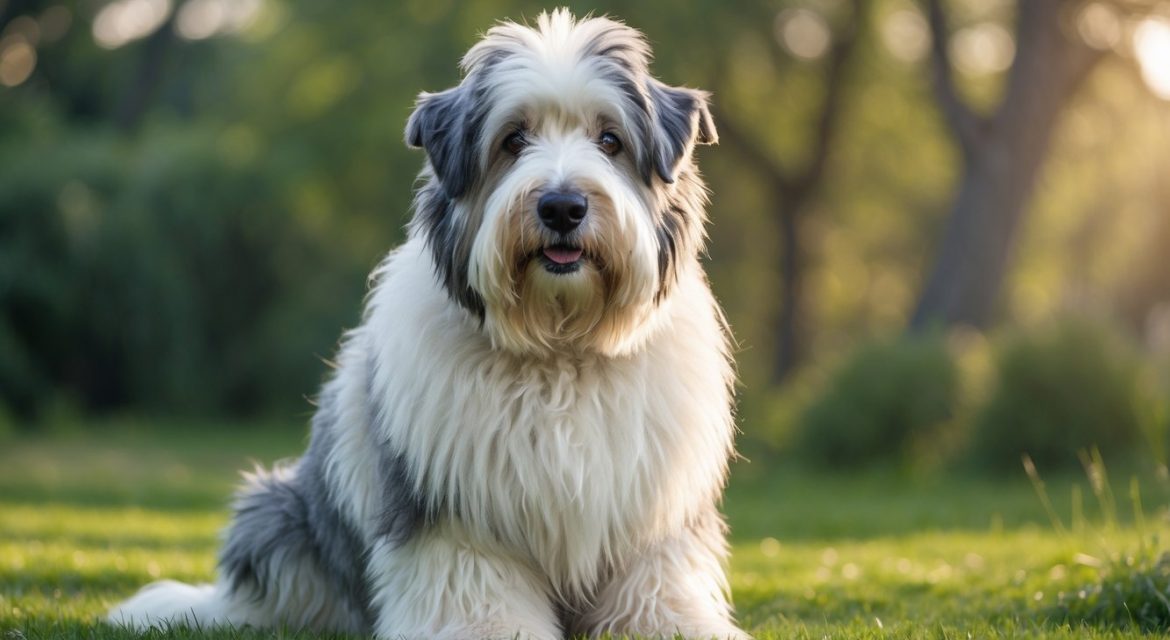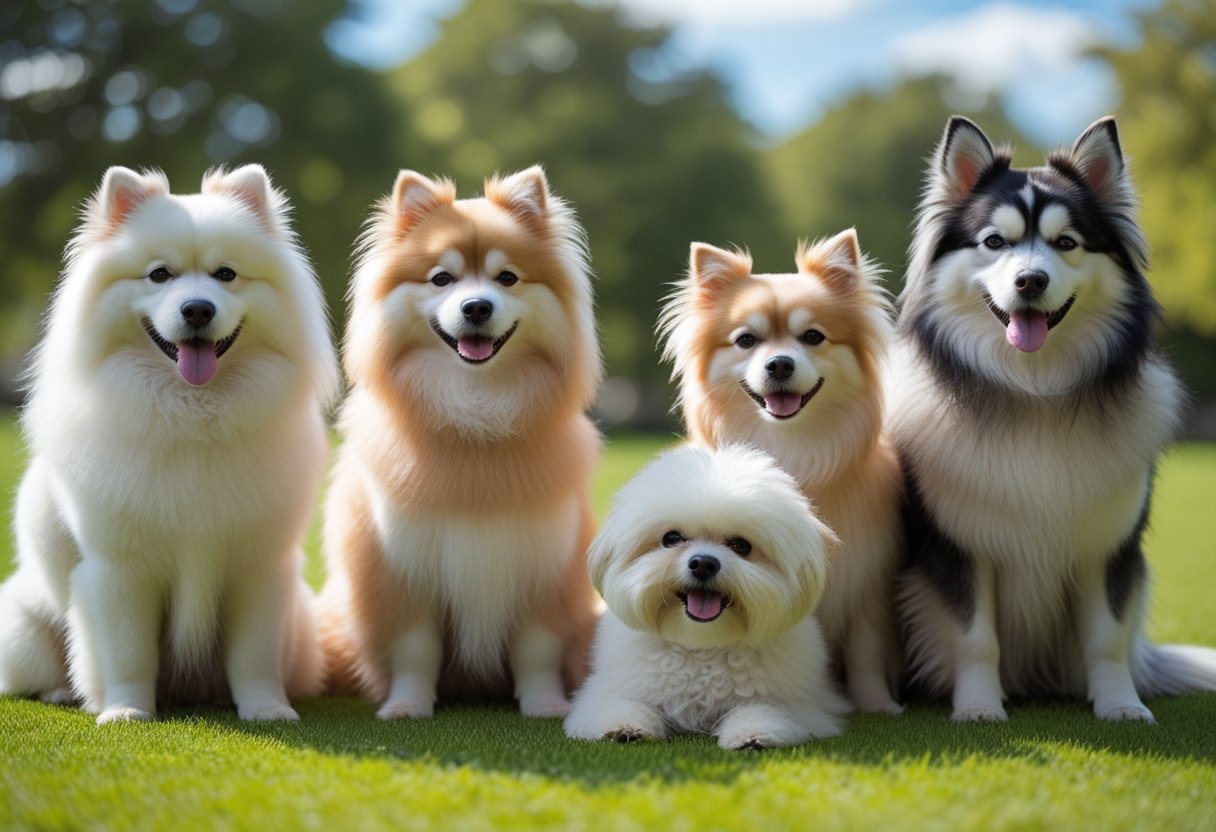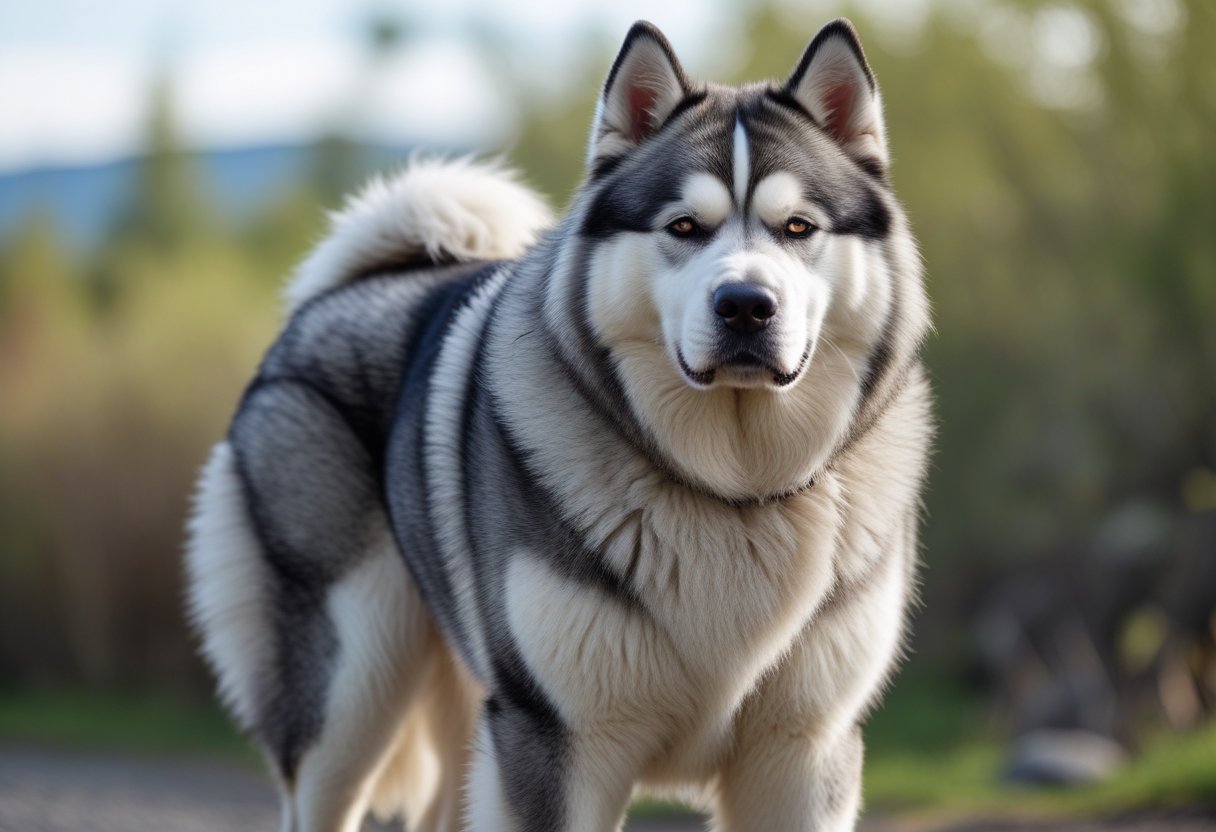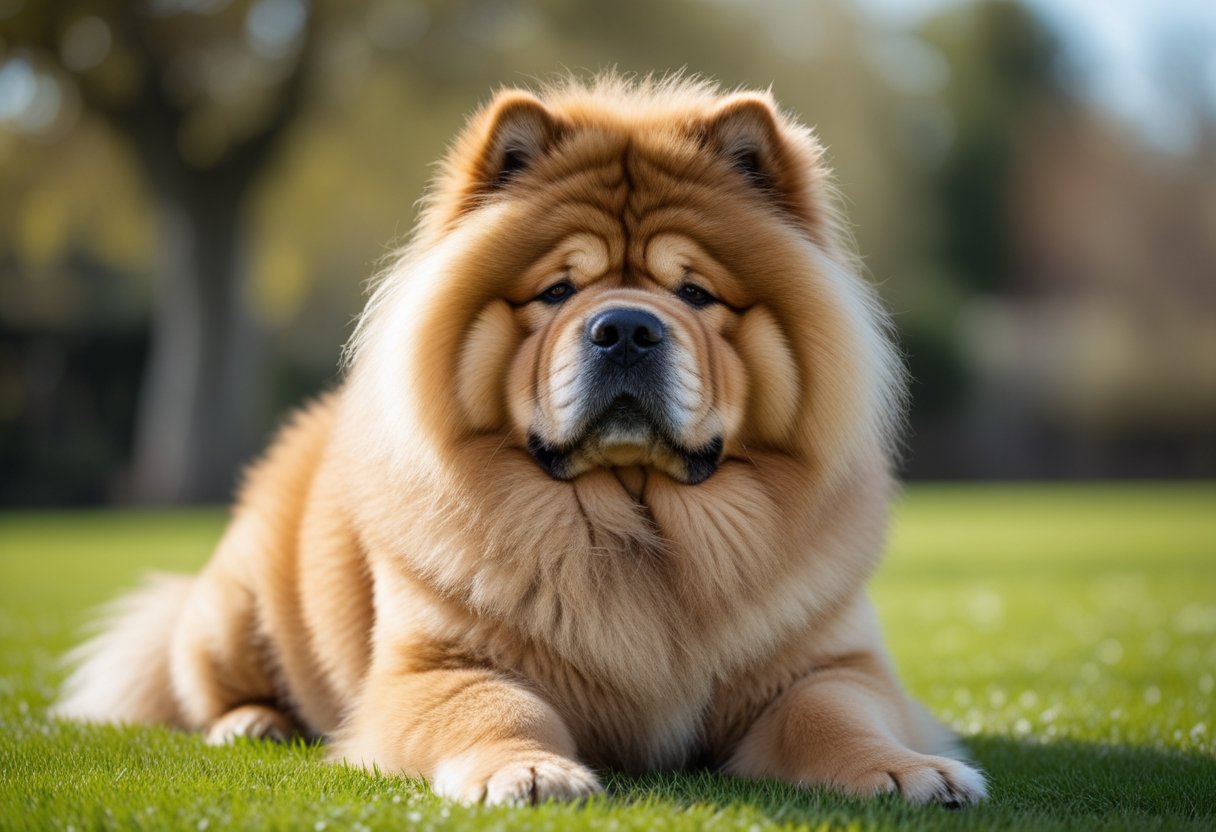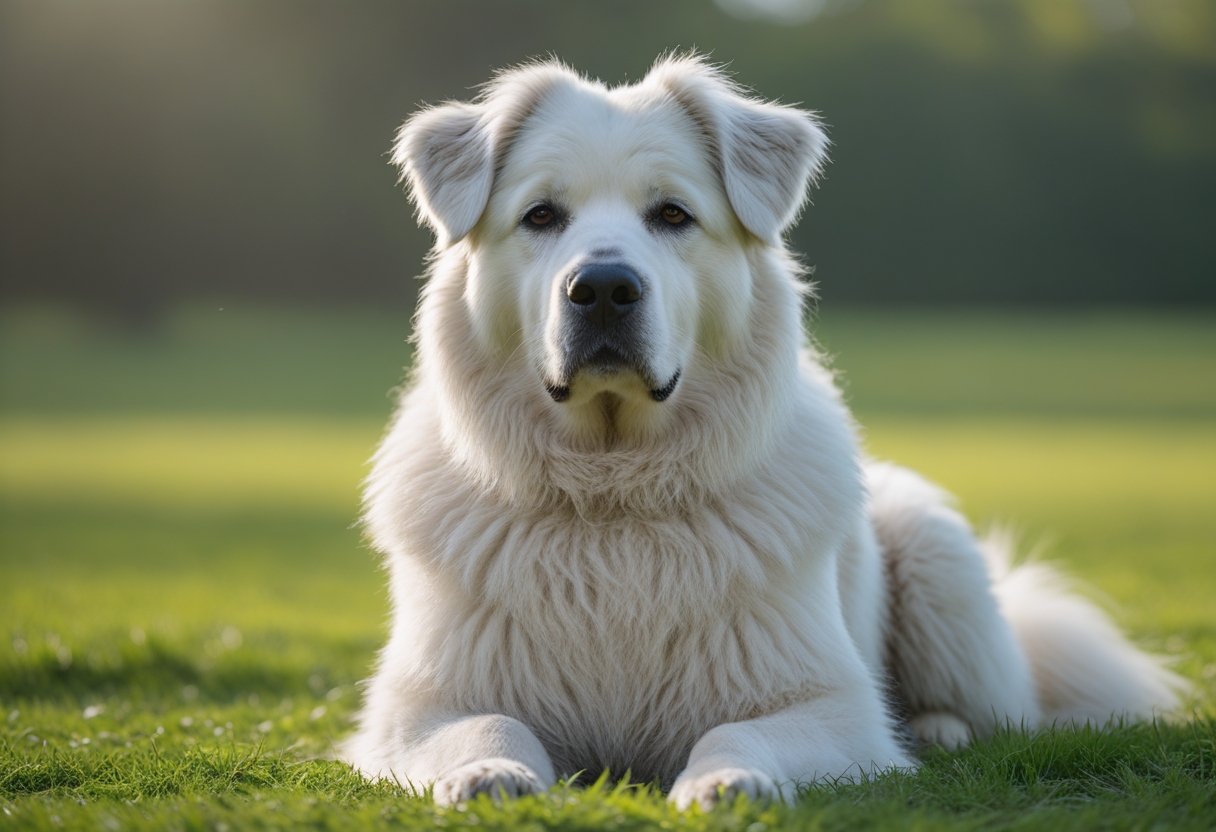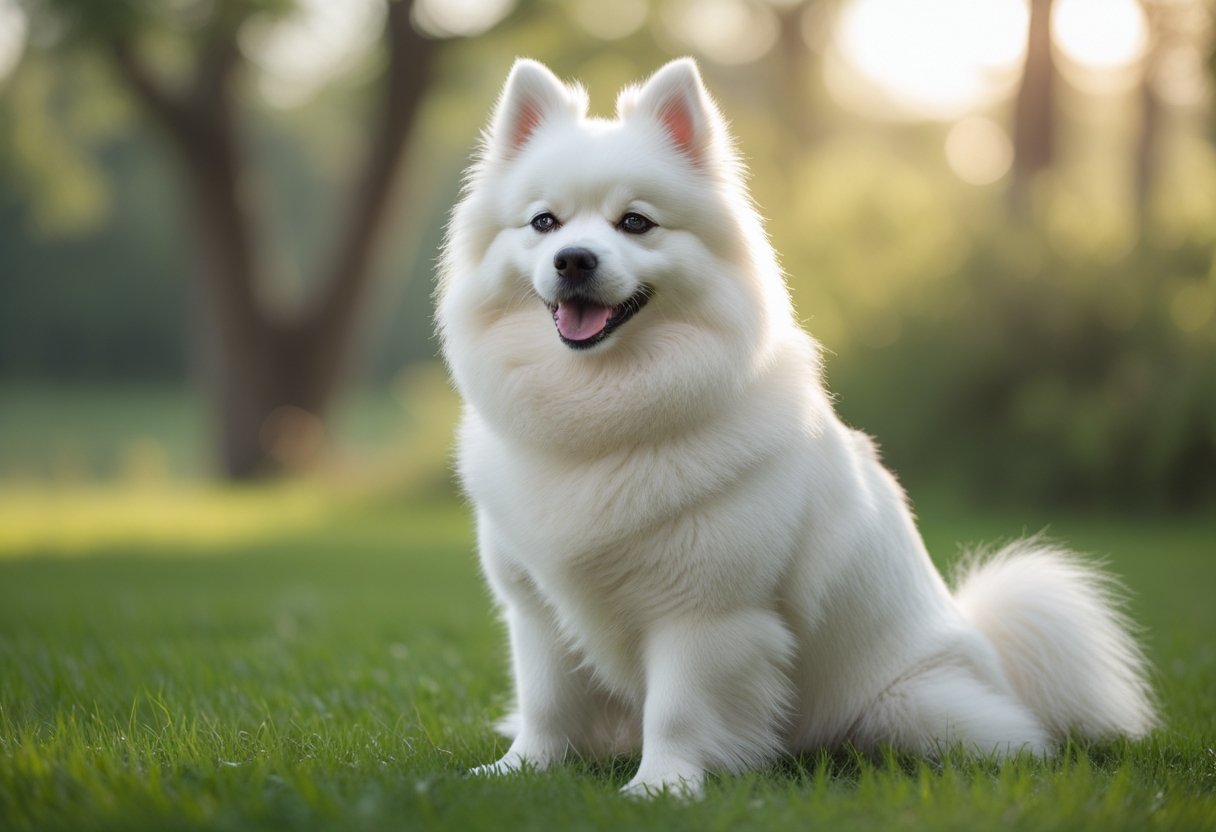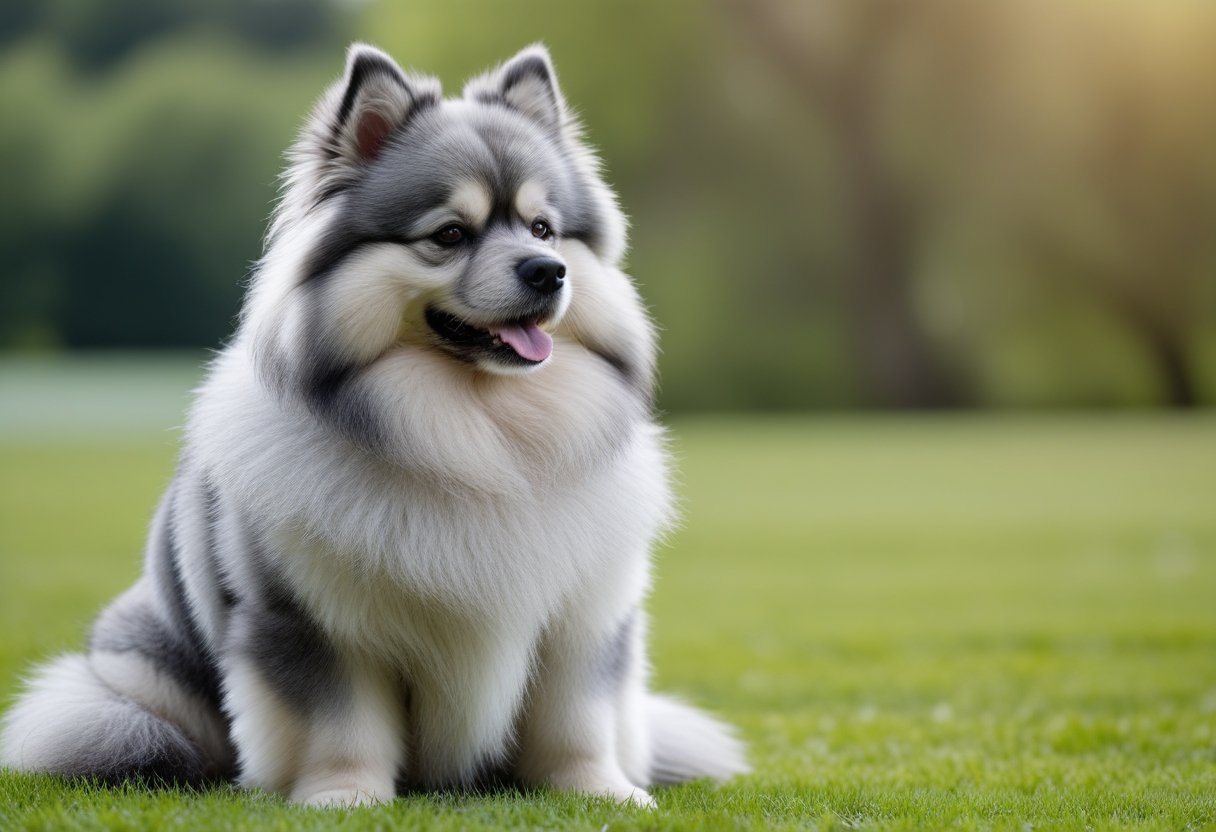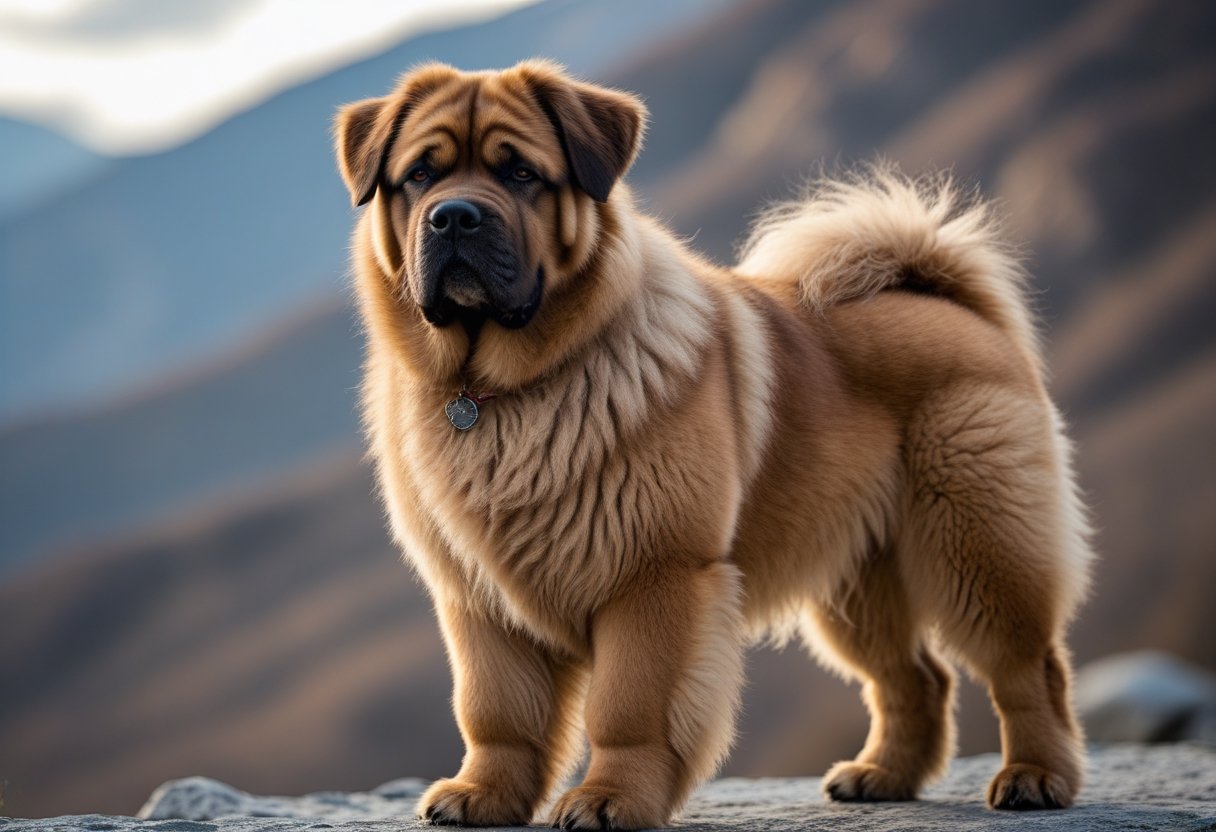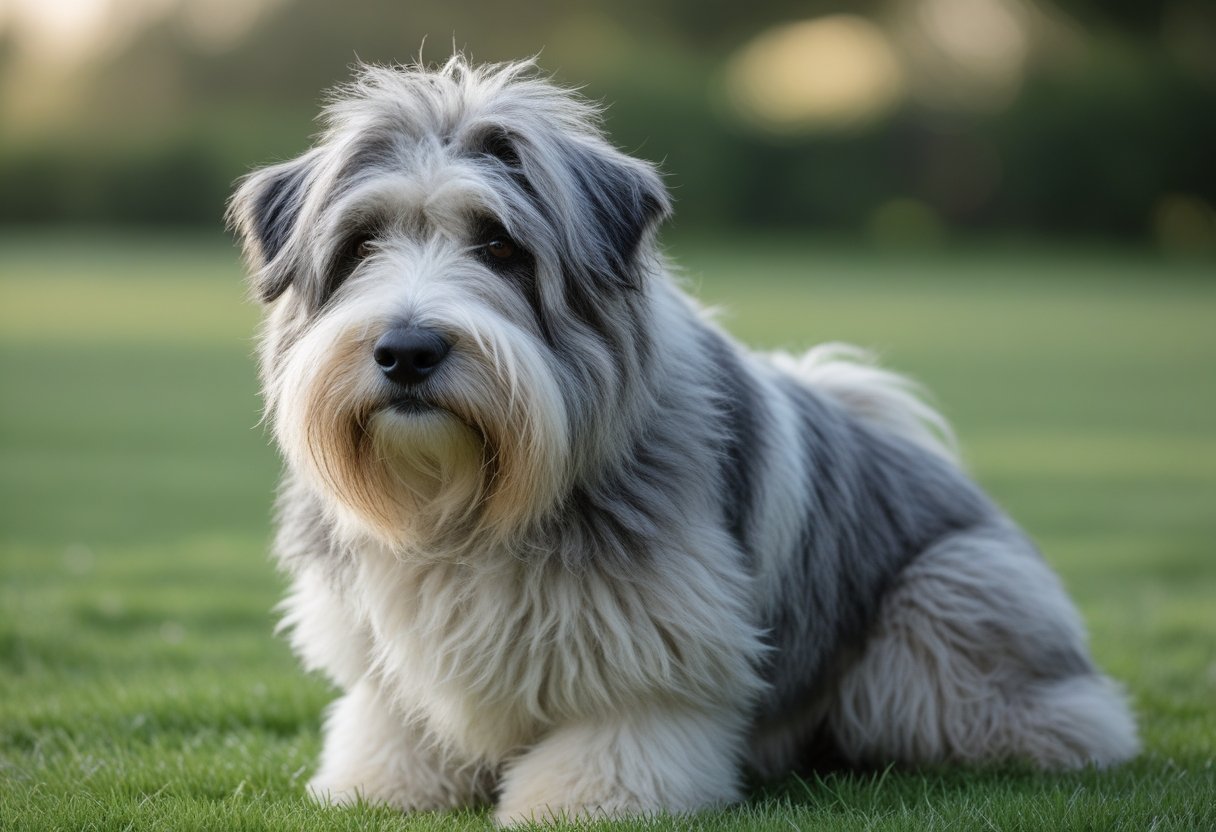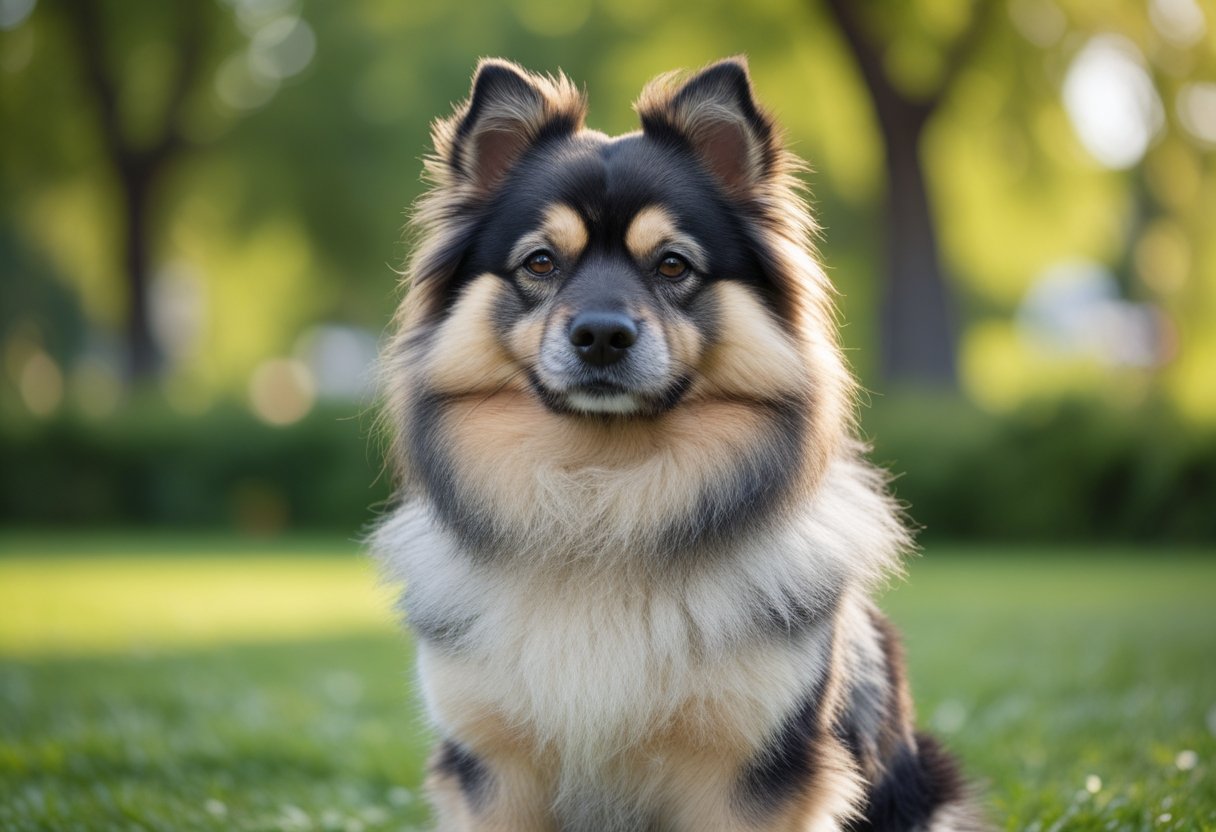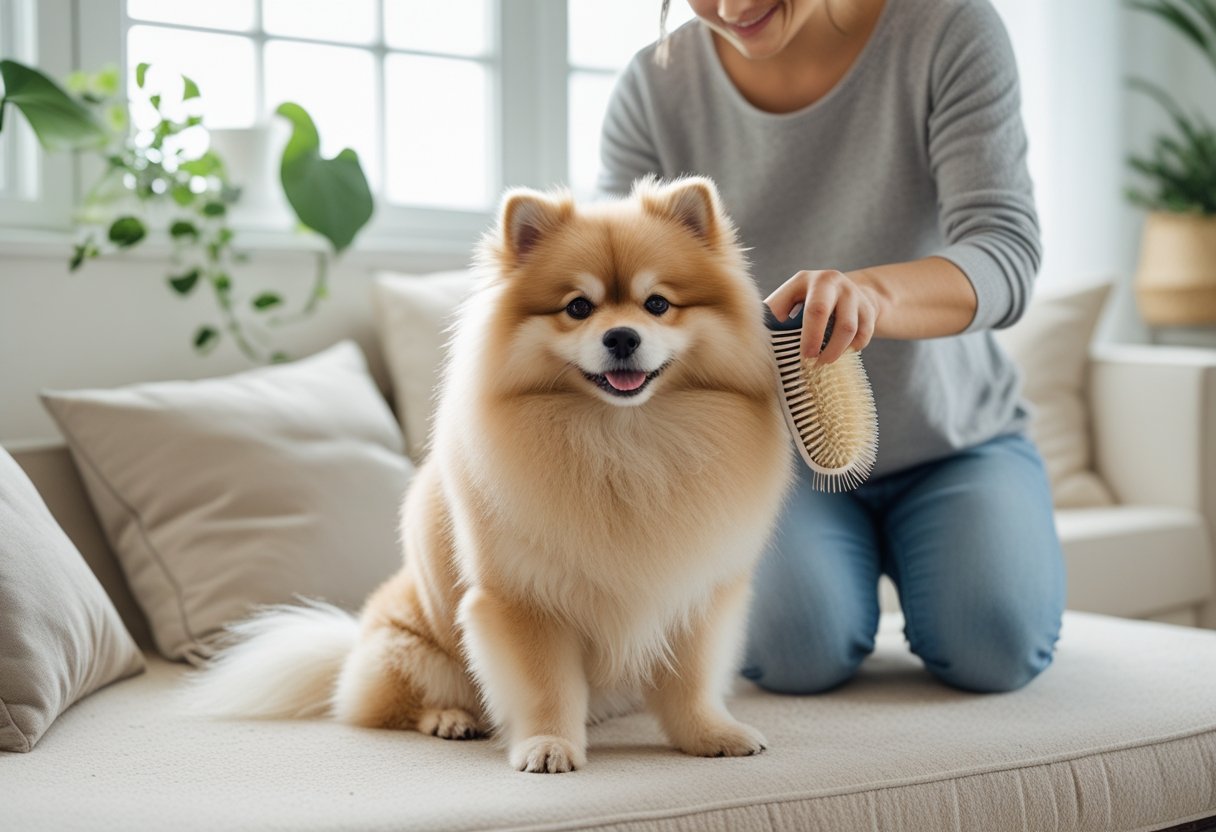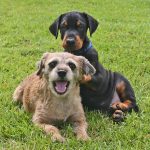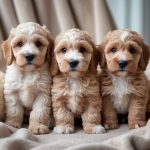Fluffy dog breeds grab your attention with their soft coats and charming personalities. Whether they’re bounding through the snow or curled up on the sofa, these dogs bring warmth and joy to any home.
Getting to know what makes each fluffy breed special can help you find the perfect match for your lifestyle and care routine.
From the cloud-like Samoyed to the tiny Pomeranian and the majestic Tibetan Mastiff, each breed has its own story and temperament. As you look into their traits and personalities, it’s hard not to fall for how these dogs mix beauty, brains, and affection.
1) Samoyed – the smiley, cloud-like fluff ball
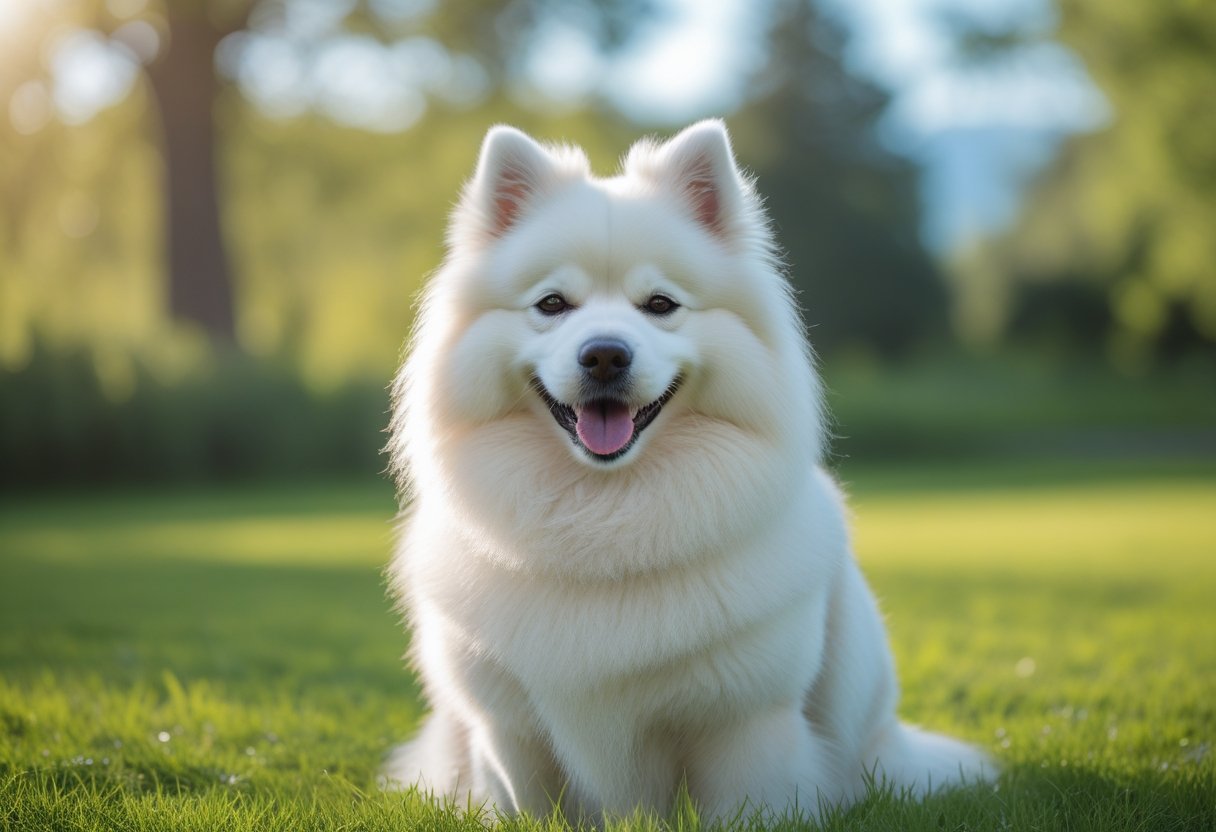
The Samoyed stands out with its thick, white coat and famous “Sammy smile.” With soft fur and a friendly face, this breed really does look like a walking snow cloud.
People first bred them in Siberia to herd reindeer and pull sleds, so they’ve got both strength and stamina. Samoyeds are cheerful and love spending time with people.
They form close bonds with families and want to be part of daily life. Their gentle, loyal nature makes them wonderful companions for both kids and adults.
Because of their dense double coat, Samoyeds need regular brushing to stay comfortable. Their fur lets them handle cold weather, but they can struggle in the heat.
The Samoyed’s fluffy coat and friendly grin make them easy to recognize. They charm everyone they meet with their bright expressions and affectionate ways.
2) Pomeranian – tiny, lively and irresistibly fluffy
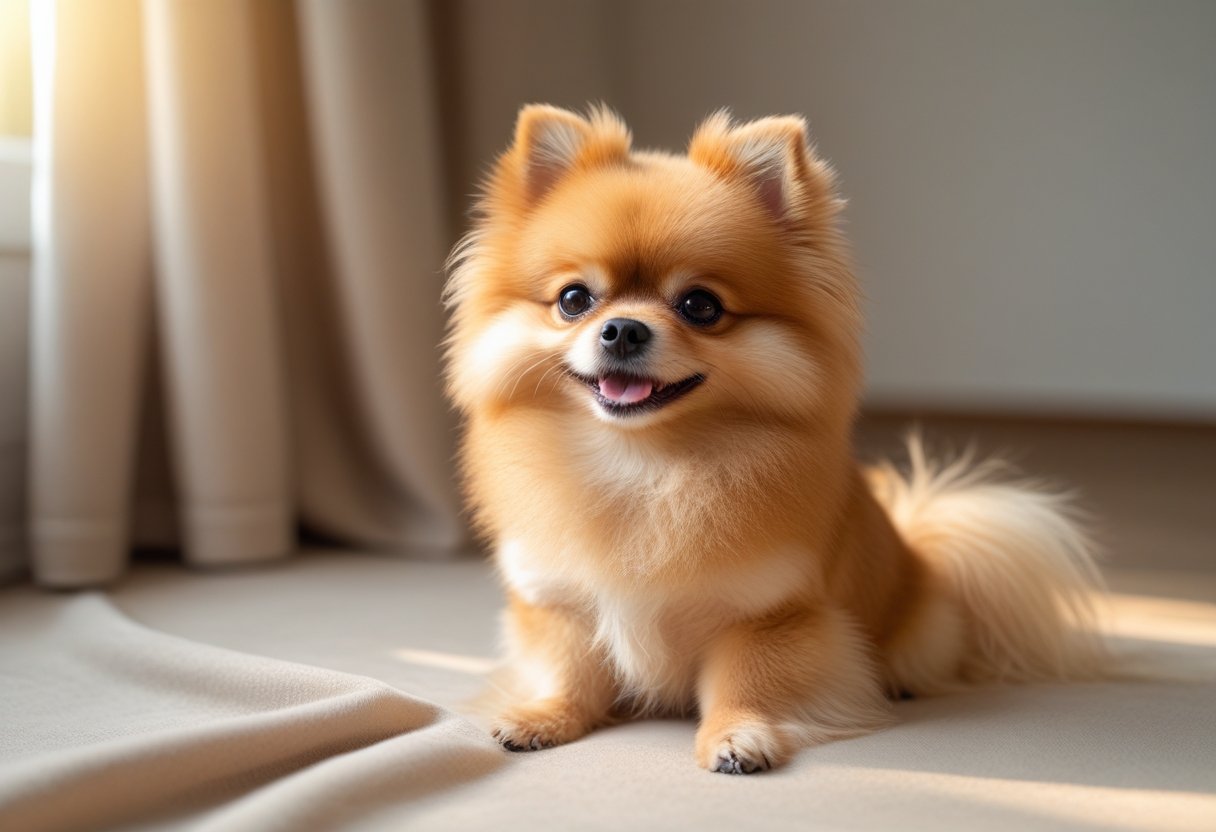
The Pomeranian is a small dog with a surprisingly big attitude. They come from the Spitz family and were bred down from the larger German Spitz.
With their fox-like faces and thick double coats, these dogs stand out wherever they go. Despite their size, Pomeranians have loads of confidence and a playful spirit.
They love being part of family life and often act like they’re much bigger than they really are. Their energy and curiosity make them fun for people who enjoy active, affectionate pets.
Their dense coat needs regular brushing to stay clean and tangle-free. A lot of owners actually enjoy grooming as a way to bond with their dog.
The effort pays off when that fluffy coat shines and feels soft. Pomeranians adapt well to small homes or flats, as long as they get enough playtime and attention.
They thrive on companionship and want to stay close to their people. Want to know more? Check out The Kennel Club’s Pomeranian profile and Pets4Homes’ guide to Pomeranian dogs.
3) Alaskan Malamute – big, strong with a thick double coat
The Alaskan Malamute is known for its size and strength. People originally bred them to pull heavy sleds across Arctic landscapes, so these dogs can really work hard.
With a broad chest and sturdy build, Malamutes are built for tough jobs and icy weather. Their thick double coat keeps them warm even in freezing conditions.
The outer layer repels snow and moisture, while the dense undercoat insulates. Their coats come in shades of grey, black, red, or sable, usually mixed with white.
The Alaskan Malamute’s dense fur and muscular frame sometimes make people mistake them for wolves, but their expressions are much softer. Despite looking strong and serious, Malamutes are gentle and affectionate.
They love being around people and do best when included in family activities. According to Dog Academy, they’re heavier and bulkier than Siberian Huskies, made for pulling loads, not racing.
Families who welcome a Malamute should be ready for lots of brushing and outdoor adventures. They need regular exercise and grooming, but their friendly temperament and fluffy coats make them worth the effort.
4) Chow Chow – lion-like mane and a dignified air
The Chow Chow turns heads with its thick, double-layered coat and blue-black tongue. Its fur forms a ruff around the neck, giving it a little lion vibe.
According to Rover.com, this breed can have either a rough or smooth coat, both equally eye-catching. Chow Chows carry themselves with quiet confidence.
People often describe their expression as serious or thoughtful, which adds to their dignified look. As Doggo Digest points out, Chow Chows seem regal and self-assured.
They might seem aloof, but they do form strong bonds with their families. They show loyalty and affection in quiet, subtle ways.
The DogPack App explains that their independent spirit comes from their long history as working dogs in ancient China. With a sturdy build and calm nature, they’re great for people who want a peaceful companion.
With proper care and early socialisation, Chow Chows can be gentle, loyal friends who bring both grace and warmth to a home.
5) Great Pyrenees – gentle giant with a snowy white coat
The Great Pyrenees stands out because of its large size and calm, steady nature. This breed comes from the Pyrenees Mountains, where it guarded sheep from predators.
These days, they’re known for their gentle temperament and loyalty. Their thick, weather-resistant coat is usually white, sometimes with touches of grey or tan.
Their fluffy coat helps protect them from the cold and gives them that signature look. Regular brushing keeps their fur clean and comfortable.
Despite their size, Great Pyrenees are patient and affectionate. They often bond closely with children and other pets.
Their protective instincts make them excellent watchdogs—they stay alert but rarely act aggressive. The Great Pyrenees does best in homes with space to move and people who appreciate a calm presence.
They enjoy time outdoors but also love relaxing beside their family. With steady training and gentle care, they become loyal, dependable companions.
6) American Eskimo Dog – smart, playful and fluffy
The American Eskimo Dog is a bright, affectionate breed that loves staying close to its family. They enjoy learning new tricks and thrive when they get attention and praise.
Their intelligence makes training pretty straightforward if you use patience and consistency. They stand out with their thick, white coat and alert expression.
Despite the name, the breed actually came from Germany and is part of the Spitz family. They share ancestry with the Pomeranian and Keeshond, which is kind of neat.
You can find more background from the American Kennel Club. These dogs come in three sizes—toy, miniature, and standard—so families can pick what fits best.
Their fluffy coats need regular brushing to prevent tangles and keep them looking clean, as mentioned in the American Eskimo Dog 101 guide. They’re playful, loyal, and eager to please.
That makes them a great match for active households. With enough exercise and companionship, the American Eskimo Dog stays cheerful and well-behaved.
Families who want an energetic, intelligent pet often find this fluffy breed a fantastic addition to their home.
7) Keeshond – friendly with a plush, silver-grey coat
The Keeshond is a medium spitz breed, famous for its thick, double coat and warm personality. Its fur forms a soft, silver-grey mane, and those black-tipped hairs really make it stand out.
The breed’s dark “spectacles” around the eyes give it a super expressive face. You can spot a Keeshond from across the park, honestly.
Originally, people bred Keeshonden to be companions and watchdogs on Dutch river barges. They stayed close to people and developed a gentle, alert nature.
Keeshonds show loyalty and affection to their families. According to dog-breeds.net, their cheerful nature and intelligence make them wonderful family companions.
The Keeshond’s thick coat needs regular brushing to avoid tangles. Their fur sheds seasonally, so grooming really matters.
Purina UK points out that under all that fluff, there’s a sturdy, muscular dog who enjoys moderate exercise and play. They thrive on companionship and want to be part of daily activities.
8) Tibetan Mastiff – majestic with a dense, weatherproof coat
The Tibetan Mastiff stands out with a thick double coat that protects it from harsh mountain weather. This breed comes from the Himalayas, where it once guarded livestock and monasteries against predators.
Its fur sheds heavily once a year, especially when the weather warms up. This large breed has a calm but independent nature.
It forms strong bonds with its family and stays alert around strangers. Living with a Tibetan Mastiff, people often admire its loyalty and quiet confidence.
Because of its size and guarding instincts, it needs space and steady training. Regular grooming helps manage that dense coat and keeps it healthy.
The Kennel Club notes that only a few of these dogs survived in remote areas after the mid-20th century, so they’re rare and historic today.
9) Old English Sheepdog – shaggy, lovable and full of character
The Old English Sheepdog is a big, shaggy breed with a gentle nature. It often weighs between 60–100 pounds and has a strong, muscular build that hints at its herding past.
Its iconic coat can show off shades of grey, blue, or white, creating that soft, cloud-like look (Dog Breeds). These dogs once helped farmers drive cattle and sheep across the English countryside.
Their intelligence and stamina made them reliable working companions (The Spruce Pets). Today, they’re more likely to be found lounging at home, where their affectionate side shines.
Families often love the Old English Sheepdog for its playful attitude and patience with kids. The long coat does need regular brushing, though many owners actually enjoy grooming as a bonding experience.
With their unmistakable “bobtail” silhouette and friendly personality, these dogs bring warmth and charm wherever they go (DogPackApp).
10) Finnish Lapphund – soft, cuddly and great with families
The Finnish Lapphund stands out for its thick, soft coat and gentle nature. The Sami people originally bred them to herd reindeer in Finland’s Arctic region.
This breed mixes intelligence with a calm, social temperament. Families appreciate how adaptable and friendly they are with kids and other pets.
They want to be part of daily life and thrive on companionship. Their affectionate side makes them wonderful for homes that value a loyal, loving dog.
The Finnish Lapphund’s friendly personality suits people who love the outdoors but also want a relaxed companion at home. Regular brushing keeps their dense fur healthy and reduces shedding.
They have plenty of energy, but don’t need intense exercise—daily walks and playtime usually do the trick. Pets4Homes says they respond well to gentle training and enjoy learning new things.
Their expressive eyes and fluffy tails give them a warm, approachable look. Lots of owners say the Finnish Lapphund brings a comforting presence to the home, offering both affection and a quiet sort of confidence.
Caring for Fluffy Dog Breeds
Fluffy dogs need regular coat care and a clean environment to stay comfy and healthy. Their thick fur can trap dirt, tangles, and allergens, so consistent grooming and a bit of maintenance go a long way.
Grooming Tips for a Healthy Coat
Routine grooming keeps a fluffy dog’s coat soft and clean. Breeds like the Samoyed and Pomeranian usually need brushing several times a week to prevent tangles and pull out loose hair.
Using slicker brushes or combs made for dense coats helps reach the undercoat without hurting the dog. Bathing every four to six weeks with a gentle dog shampoo keeps the coat clean but doesn’t strip away natural oils.
It’s important to dry the coat thoroughly to prevent dampness and skin problems. Regular trimming around the eyes, paws, and sanitary areas helps with hygiene and visibility.
Professional grooming every few months can help manage thicker coats, as suggested in Caring for Your Fluffy Dog: 10 Tips for a Healthy and Happy Pup. Keeping grooming sessions short and calm helps dogs stay relaxed.
Giving treats or praise during grooming builds positive feelings about the process. It’s not always easy, but it helps in the long run.
Managing Shedding and Allergies
Fluffy breeds shed differently depending on the season and breed. Dogs like the Bichon Frise shed less and might work for families with mild allergies, while breeds like the Akita or Samoyed shed a lot during seasonal changes (Fluffy Dog Breeds: Types, Characteristics & Care Tips).
Frequent brushing helps control loose fur and keeps shedding manageable. Using a vacuum with a pet hair attachment makes cleaning up easier.
If you’re sensitive to pet dander, air purifiers and washing bedding regularly can help reduce allergens. Bathing dogs with hypoallergenic shampoo may also help if dry skin is an issue.
A balanced diet with omega-3 fatty acids supports a healthy coat and can reduce shedding. If allergies stick around, talking to a vet is always a good idea for everyone’s comfort.
Understanding Temperament and Lifestyle Needs
Fluffy dog breeds can be wildly different in behaviour, activity level, and social needs. Some love calm homes and routines, while others crave adventure and lots of play. Understanding these differences helps you find a good match for your lifestyle.
Matching Energy Levels to Your Home
Every fluffy breed has its own pace. Breeds like the Samoyed and Border Collie need daily exercise and mental challenges to stay happy.
Smaller dogs like the Pomeranian or Shih Tzu are fine with shorter walks and indoor games. Picking a breed that fits your daily routine saves everyone a headache.
Space matters, too. Large, energetic breeds might struggle in small apartments without a garden.
Meanwhile, calm or low-energy dogs can adapt well to compact living. If you love hiking or running, an active dog can be your best buddy.
A quick comparison can help:
| Breed Type | Energy Level | Ideal Home Environment |
|---|---|---|
| Samoyed | High | Spacious home, active family |
| Chow Chow | Moderate | Quiet household, steady routine |
| Pomeranian | Low–Moderate | Apartment or small home |
Socialisation and Training Considerations
Fluffy dogs catch a lot of attention, but their social needs go deeper than looks. Early socialisation helps them feel comfortable with people, kids, and other pets.
Breeds like the Chow Chow can be reserved, while the Bichon Frise is usually friendly and outgoing. Knowing these traits helps everyone get along.
Training matters, too. Consistent, gentle methods work best, especially for sensitive breeds.
Reward-based techniques encourage cooperation and build trust. Regular grooming can double as bonding time, helping your dog stay calm during handling.
Owners who spend time on early training usually see fewer issues down the road. Guidance from good trainers or resources like PetMD’s guide to fluffy dog breeds can really help in the long run.
Frequently Asked Questions
Fluffy dog breeds have a way of charming people with their soft coats and loyal personalities. There’s just something irresistible about a furry companion who loves to snuggle.
These breeds usually need regular grooming and a good bit of patience. It’s worth it, though—when they’re happy and healthy, the bond is hard to beat.
What are some of the best breeds for cuddly companions?
The Samoyed is famous for its friendly smile and cloud-like fur. Cuddling with one feels like hugging a living pillow.
For folks who want something smaller, the Pomeranian brings a lively spirit and a thick, soft coat. Both breeds love close contact and soak up affection, so they’re perfect for anyone craving a warm, fuzzy friend.
How do you care for a dog with a thick, plush coat?
Double-coated breeds like the Alaskan Malamute or Chow Chow really need regular brushing to avoid tangles and mats. It’s not always easy, but the right brush and a good detangling spray can help a lot.
According to PetsCare’s guide on fluffy dogs, daily brushing keeps the coat cleaner and cuts down on shedding. It’s a small habit that makes a big difference.
Which friendly dog breeds are known for their soft fur?
The Great Pyrenees stands out with its dense, snowy coat that’s soft to the touch and keeps the dog warm in chilly weather. The Bichon Frise and Keeshond also have silky, fluffy coats and sweet personalities.
These breeds usually love being close to their people and enjoy gentle petting sessions. If you’re after a dog that feels like a plush toy, these three are solid choices.
What should you consider before adopting a high-maintenance pup?
Fluffy breeds often need more grooming time and attention than short-haired dogs. They might shed a lot and need regular coat care, which can be a lot for some owners.
WoofWagNation’s list of top fluffy breeds points out that it’s smart to match a dog’s energy level and grooming needs with your lifestyle. Not everyone’s up for daily brushing, and that’s okay.
Can you recommend some gentle dogs that are great with kids?
The Great Pyrenees and Samoyed are both patient and protective, so they’re great for families. The Poodle and Bichon Frise usually have gentle, playful personalities that fit in well with children.
Families often appreciate how affectionate and calm these dogs can be. If you want a gentle, fluffy friend for your kids, these breeds are worth a look.
How often should you groom a dog with a voluminous mane?
Most fluffy dogs need brushing several times a week. Some really need daily care, honestly.
Breeds like the Chow Chow and Alaskan Malamute do best with consistent grooming. That helps prevent all those annoying mats.
PetsCare suggests setting aside 30–45 minutes for each session. That’s usually enough to keep thick coats cleaner and much more manageable.


